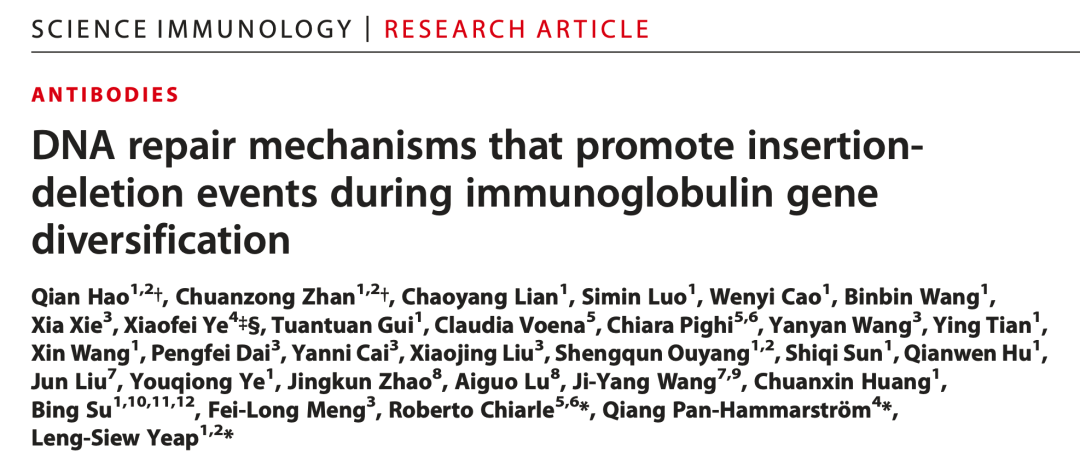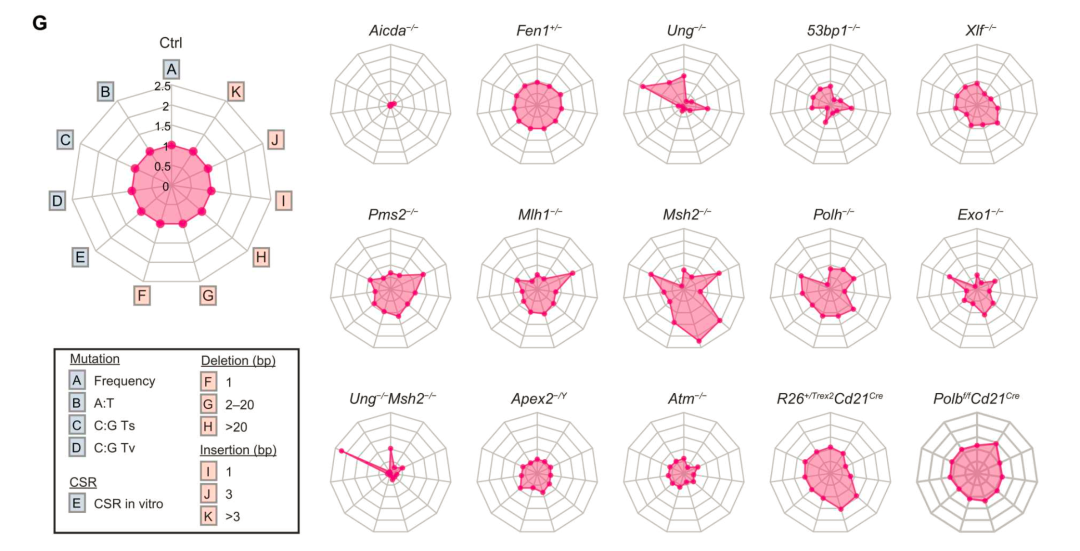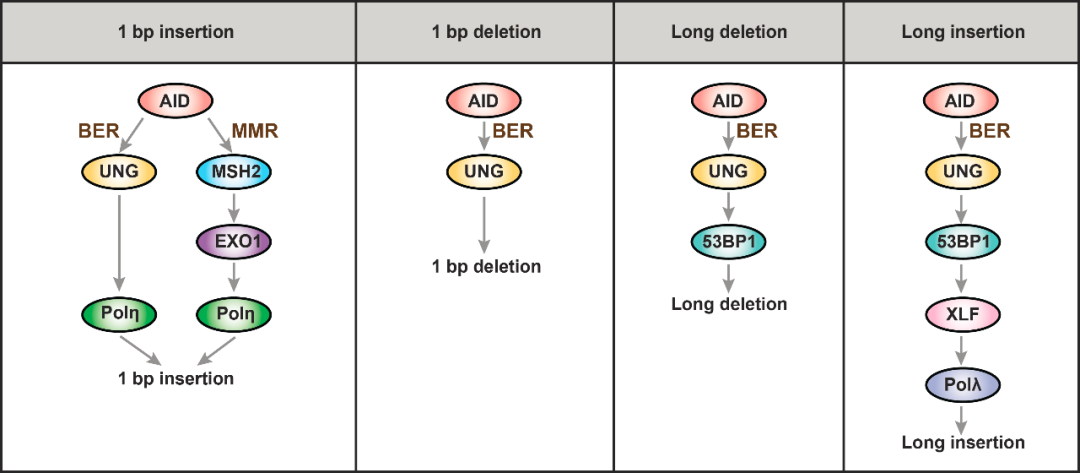Researchers from the laboratory of Leng-Siew Yeap at the Shanghai Institute of Immunology, Shanghai Jiao Tong University School of Medicine, Qiang Pan-Hammarström at the Karolinska Institute and Roberto Chiarle at Harvard University and the University of Torino have reported the results of their work to elucidate the mechanisms that generate rare mutagenic outcomes of antibody diversification process, with implications for the generation of antiviral broadly neutralizing antibodies and the development of autoantibodies.

The study, published online on 24 March 2023 in Science Immunology, represents a major advance in understanding the mechanisms underlying the generation of insertions and deletions (indels), rare outcomes of a physiological process that generates mutations in DNA to produce good antibodies. Indels are generally undesirable in the genome, but they are common and have been shown to be functionally important in rare antibodies that can neutralize a wide range of viral strains. To study the mechanisms that generate insertions and deletions, the researchers take advantage of a powerful passenger-antibody gene knock-in mouse model, which allows the detection of unselected mutational events, and ultra-deep sequencing of a large numbers of germinal center B cells to gain insight into even relatively rare events (Figure 1). This led to the revelation that ±1 bp indel events, which are deleterious to the B cell receptor function, are the most common indel events, while longer indel events, which can generate productive antibodies, are rare (Figure 2). By analyzing a large number of DNA repair gene-deficient mice carrying the passenger allele, the researchers identified the different DNA repair pathways that generate indels of different sizes, e.g. the mechanisms that generate 1 bp events are not the same as those that generate longer indels (Figure 3 and 4). The study also generated mutant mouse models with either increased deletions or insertions, which could potentially be used to identify rare antibodies.

Figure 1: Schematic of the study design.

Figure 2: 1 bp indels events are prevalent.
The co-first authors of this paper are Dr Qian Hao, a research associate, and Chuanzhong Zhan, a PhD student in the Yeap Lab. This work was supported by funding from the National Key R&D Program of China, the National Natural Science Foundation of China, the NSFC-MAECI Italy-China Collaborative grant, the Joint Research Initiative of the School of Medicine, Shanghai Jiao Tong University, the Swedish Research Council, the Swedish Cancer Society, CIMED, the Alice Wallenberg Foundation, and the China Postdoctoral Science Foundation. We would like to thank all of our wonderful collaborators on this study who are not mentioned here individually. The authors also acknowledge the support of the Center of Immune-Related Diseases at Shanghai Institute of Immunology and Core Facilities at the Shanghai Institute of Immunology and the School of Basic Medical Science.
The Yeap lab welcomes enthusiastic students and postdoctoral fellows to join the group. Interested individuals can contact Dr Yeap at yeaplengsiew@shsmu.edu.cn.

Figure 3: Summary of the AID-initiated mutagenic outcomes of the different genetic models used in this study.

Figure 4: Distinct factors/pathways that generate the 1 bp or longer indel events.
